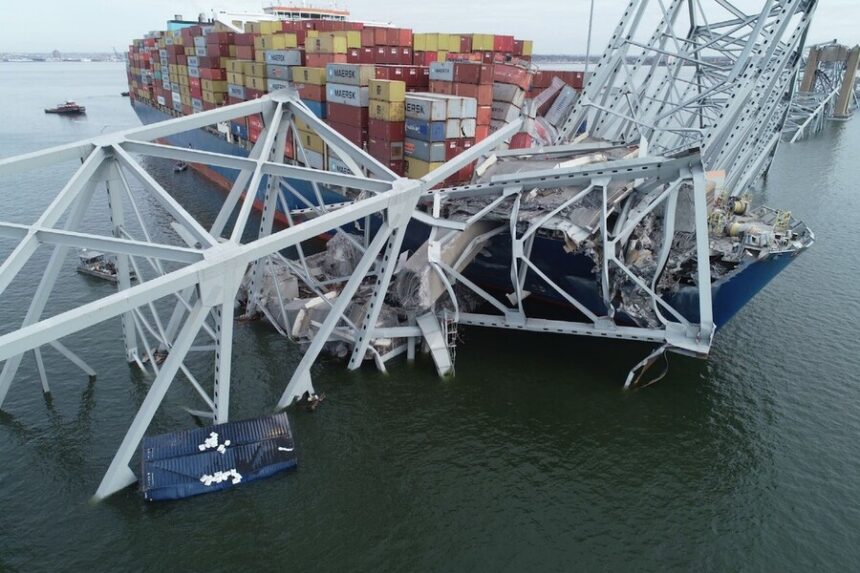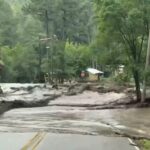Nearly one year after the catastrophic collapse of the Francis Scott Key Bridge, a new report from the National Transportation Safety Board (NTSB) is placing the spotlight on the Maryland Transportation Authority (MDTA) for its failure to address long-standing structural vulnerabilities. According to the report, MDTA missed a critical opportunity to conduct a vulnerability assessment that might have prevented the disaster.
The bridge collapsed in March 2024 after being struck by the cargo vessel DALI, killing multiple people and cutting off a major artery to one of the East Coast’s busiest ports. Initial reports suggested the incident was an isolated accident, but new evidence indicates that the collapse may have been foreseeable — and avoidable.
Crowdsourced outrage is growing after the NTSB confirmed the MDTA had failed to carry out assessments recommended in safety advisories issued in both 1991 and 2009. These assessments were designed to determine the structural integrity of bridges in the event of a vessel collision. The Key Bridge, the report found, had a risk of catastrophic failure nearly 30 times higher than acceptable safety standards. The specific pier struck by the ship — Pier 17 — was found to be 15 times more vulnerable than safety thresholds allow.
“The analysis showed that probably preventative measures need to be taken,” said U.S. Senator Chris Van Hollen, who now urges immediate inspections on other critical infrastructure, including the Chesapeake Bay Bridge, which still hasn’t undergone a recommended vulnerability assessment.
Locals affected by the tragedy expressed shock and frustration over the report’s findings.
“I was shocked… it just seemed unimaginable,” a resident told WJZ.
“Terrible, I mean frightening,” added Raymond Welzel, another Maryland resident. “It’s somebody’s job to make sure that doesn’t happen.”
The collapse has deeply impacted the community and local businesses, who are still struggling with the aftermath. “People died, and now what it’s going to cost to rebuild it and the inconvenience we’re going through… hopefully people are up in arms about it and will do something about it,” said Bob DiMartino, a business owner in Pasadena.
NTSB officials have now called on 30 bridge owners across 19 states to conduct immediate assessments on 68 bridges that may face similar risks. Experts believe that had MDTA conducted its risk analysis — factoring in recent ship traffic trends — the bridge could have been reinforced or retrofitted to better withstand a collision.
“Over the past 50 years, hundreds of thousands of vessels transited under the Key Bridge without incident,” MDTA said in a statement responding to the NTSB report. “The Key Bridge, like other bridges in America, was approved and permitted by the federal government and in compliance with those permits.”
However, the agency also placed blame on the operators of the DALI, saying the tragedy was solely the result of “gross negligence” by the ship’s owners, who the MDTA accused of placing “profits above safety.”
But many experts and residents aren’t satisfied with that explanation. Civil engineers and transportation analysts have pointed out that maritime vessels have increased in size and power in recent years, placing more stress on infrastructure that was designed under outdated standards.
“This was not an unavoidable tragedy,” said civil engineer Dr. Mariah Epps. “The warning signs were there, and ignoring them left this bridge — and everyone on it — vulnerable.”
The psychological toll has also been significant. Some residents have reported increased anxiety when using other large bridges in the region, including the Chesapeake Bay Bridge.
“You’re driving over any bridge now having to be scared,” one local told WJZ Reporter Caroline Foreback. “It’s just terrifying to think that could happen to anybody.”
As of now, the rebuilding process for the Key Bridge is underway, but questions remain about how future risks will be assessed and addressed. The collapse has triggered a broader conversation about infrastructure safety and the responsibilities of agencies tasked with public oversight.
With the NTSB’s findings now public, the pressure is on MDTA and other transportation authorities to conduct overdue vulnerability assessments and implement modern safety protocols. While the federal government has not indicated whether new regulations are coming, public demand for accountability is growing.
The Key Bridge collapse, once thought to be a tragic accident, is now being viewed through a different lens — one of institutional failure, missed warnings, and the devastating cost of inaction.




